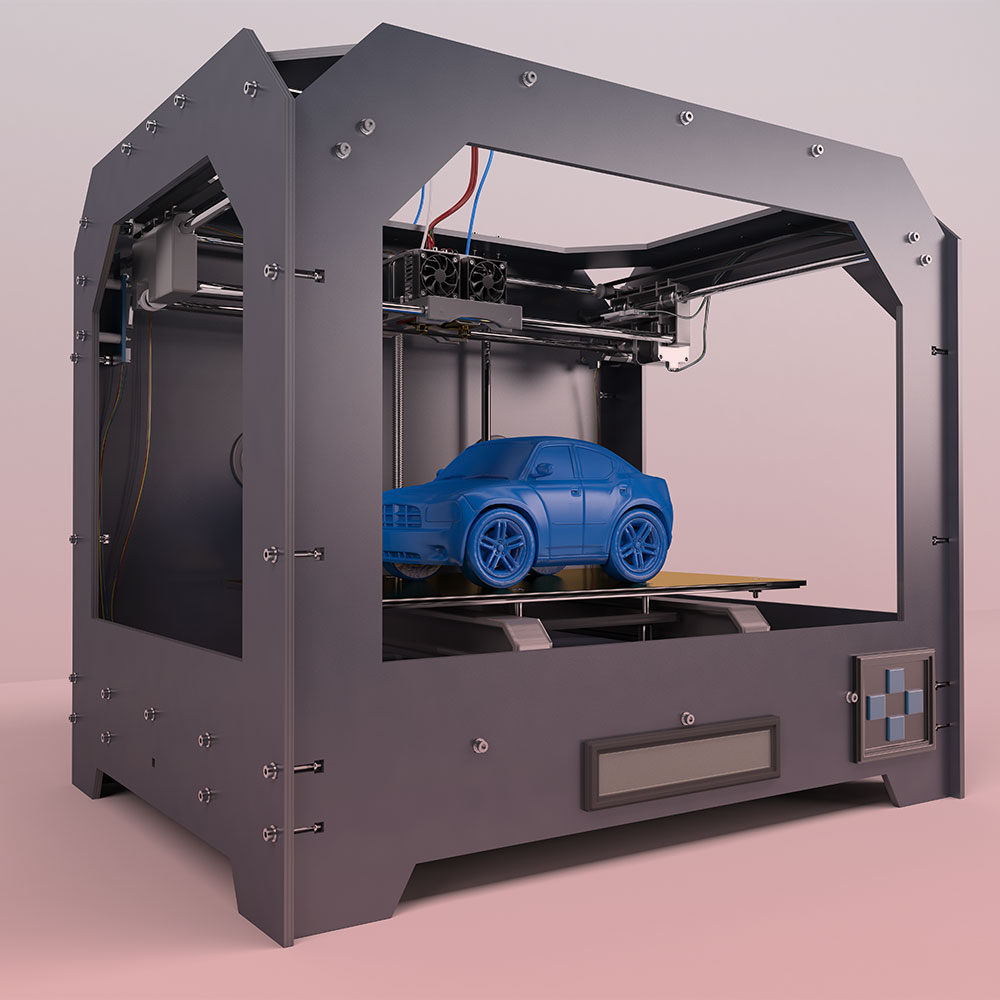3D-Printed Cars? A New Steel Alloy Could Make it Happen

3D printing has gained more acceptance in small-scale projects than in large industrial environments. Aspects such as the slowness of the process or difficulty obtaining regular finishes have prevented mass adoption. However, there are sectors such as construction where the results are already tangible. Thanks to the latest technological breakthroughs, other sectors will benefit from the technology. The latest party joining the party is the automotive industry with a new steel alloy for 3D printing.
A novel technology for 3D printing of vehicles
Tesla’s factories have been applying the technique used to produce toy cars to their vehicles. I.e., a metal casting process by which molten metal is poured into a mold to form objects. This machine, known as Giga Press, weighs nine thousand tons and significantly reduces the number of parts needed to manufacture the chassis. However, metal cooling systems and inert gases are required to speed up the process and to obtain homogeneous results. So far, the parts have a maximum weight of fifty kilograms. But what if additive 3D printing were used?
That approach prompted two young MIT students to undertake a new project in collaboration with an advisor from the University of Paderborn in Germany to print with steel. The result has earned them a prize in the ASM Education Foundation 2022 design competition.

Based on a material property calculation system called CALPHAD, the researchers formulated a new steel alloy with the ideal characteristics. After melting and atomizing it into droplets, the droplets solidified and formed the powder used as raw material. It was now sufficient to deposit layers of steel powder and melt it with a laser.
The advantage of 3D printing is that the material cools much faster, and the quality of the results is improved, enabling the printing of more complex parts. The new alloy has already been patented and may soon be used to manufacture more sustainable electric vehicles.
Printing with wood… and light
New 3D printing techniques have bloomed recently, using alternative raw materials to plastic, cement, or resin. Here are some of the most striking ones:
Laboratory wood
The innovative steel alloy is not the only 3D printing material from MIT’s labs. In fact, it is an innovative technology that, through plant-like growth, generates a material of outstanding hardness.
To achieve this, they used living cells from a plant called zinnia, transferred to a gel where they were stimulated to accelerate their growth through plant hormones. It is hoped that the technique will manufacture one-piece furniture using molds in the future.
Printing with light
More than a matter of raw material, it is a technology that allows the resin to be solidified a hundred times faster than conventional additive printing. As explained in this article, the system projects two beams of light onto a resin and solidifies it almost immediately in a polymerization process. In addition, since the resulting pieces have no joints or points of union, they are much more resistant than those obtained with traditional techniques.
3D printing with molecules
If the above examples offer new ways to 3D print at the visible scale, researchers at the Jülich Institute for Quantum Nanoscience in Germany are applying similar strategies at the microscopic scale. In this case, they have combined artificial intelligence and tunneling microscopes to move and position molecules at will. This breakthrough opens the door to the fabrication of molecular transistors with applications in quantum computing.
The possibilities of 3D printing are limitless since, in addition to allowing the printing of structures, food, or even living organs, they are one of the most promising avenues for colonizing other planets. Thus, NASA and private companies are exploring the potential of additive printing to build structures on the Moon or Mars. If you want to learn more about the possibilities of 3D printing and other technological advances, you can subscribe to our newsletter at the bottom of this page.
Source:

